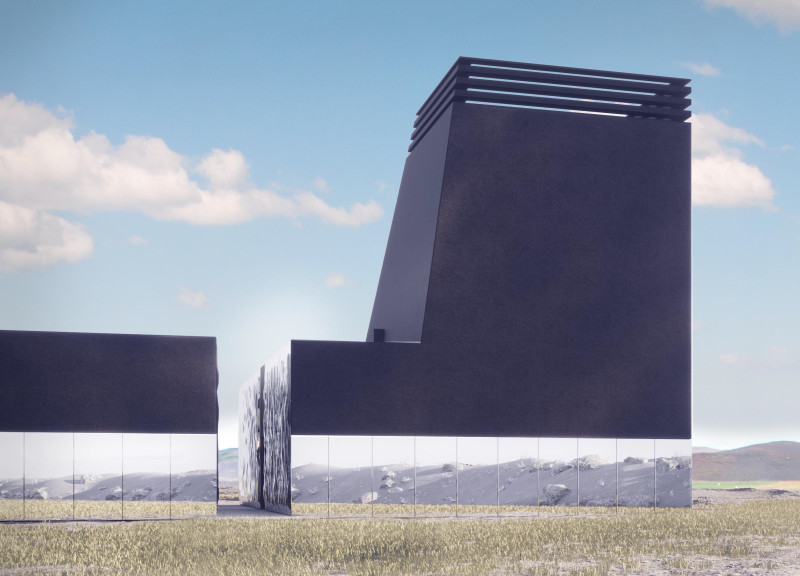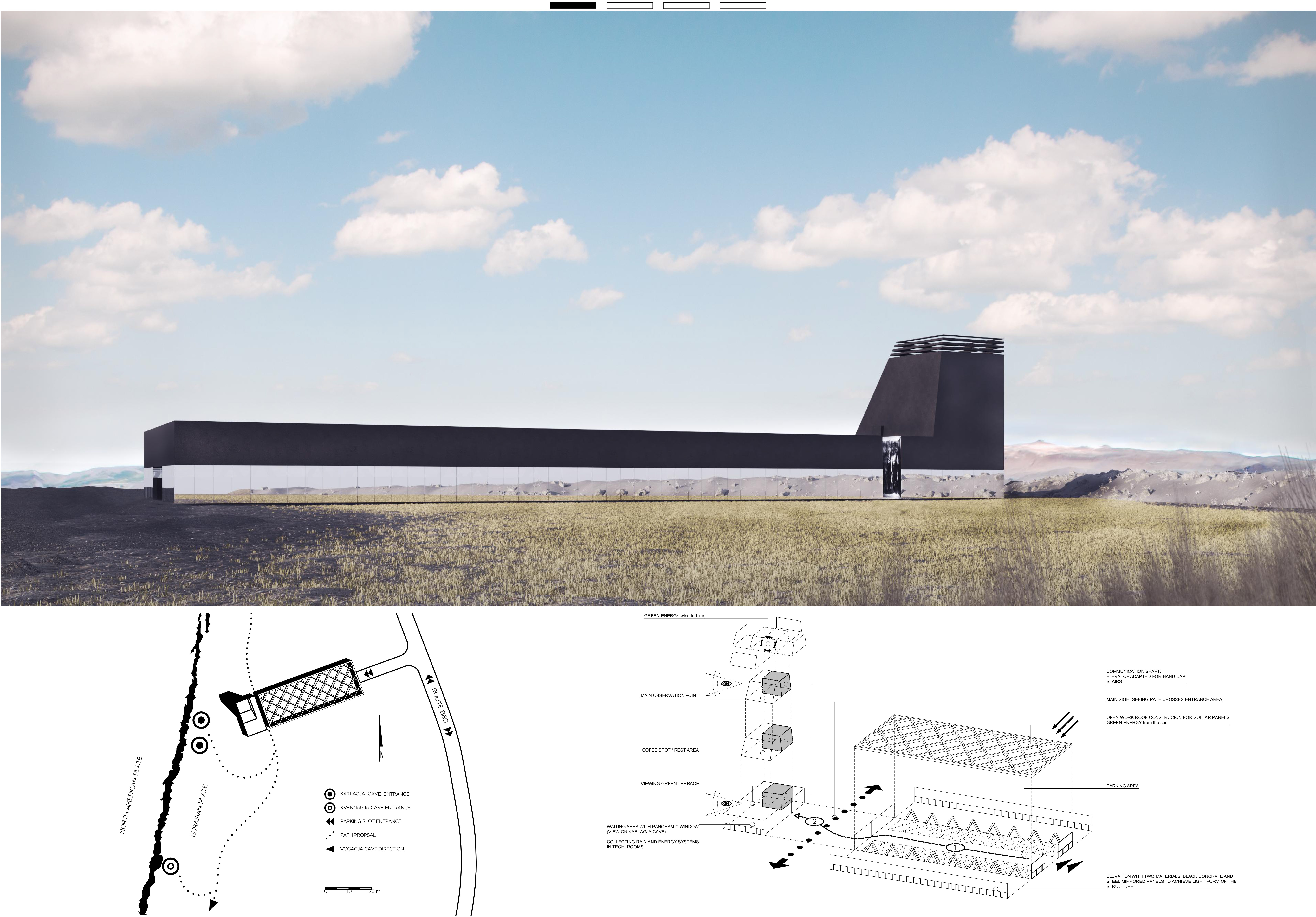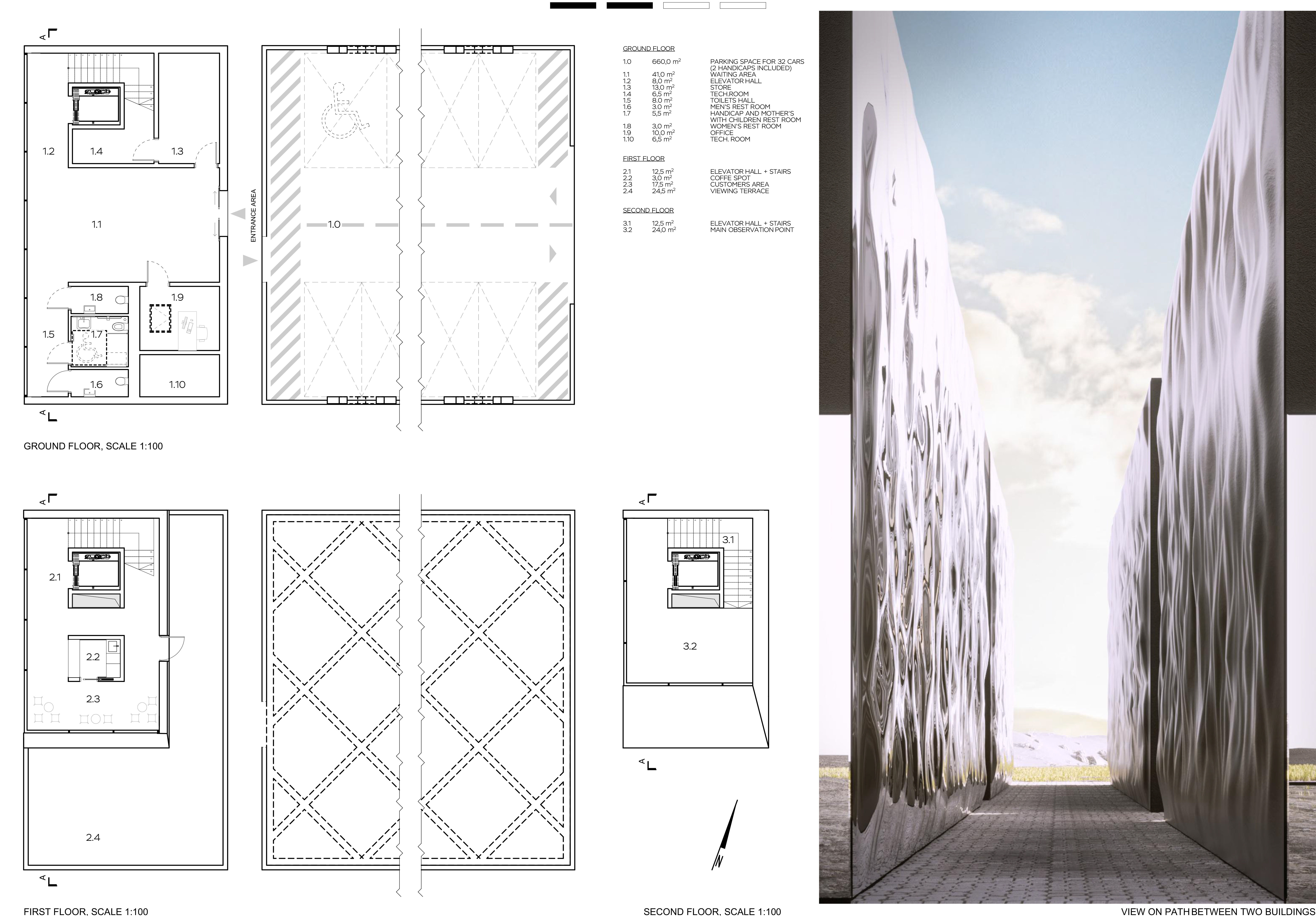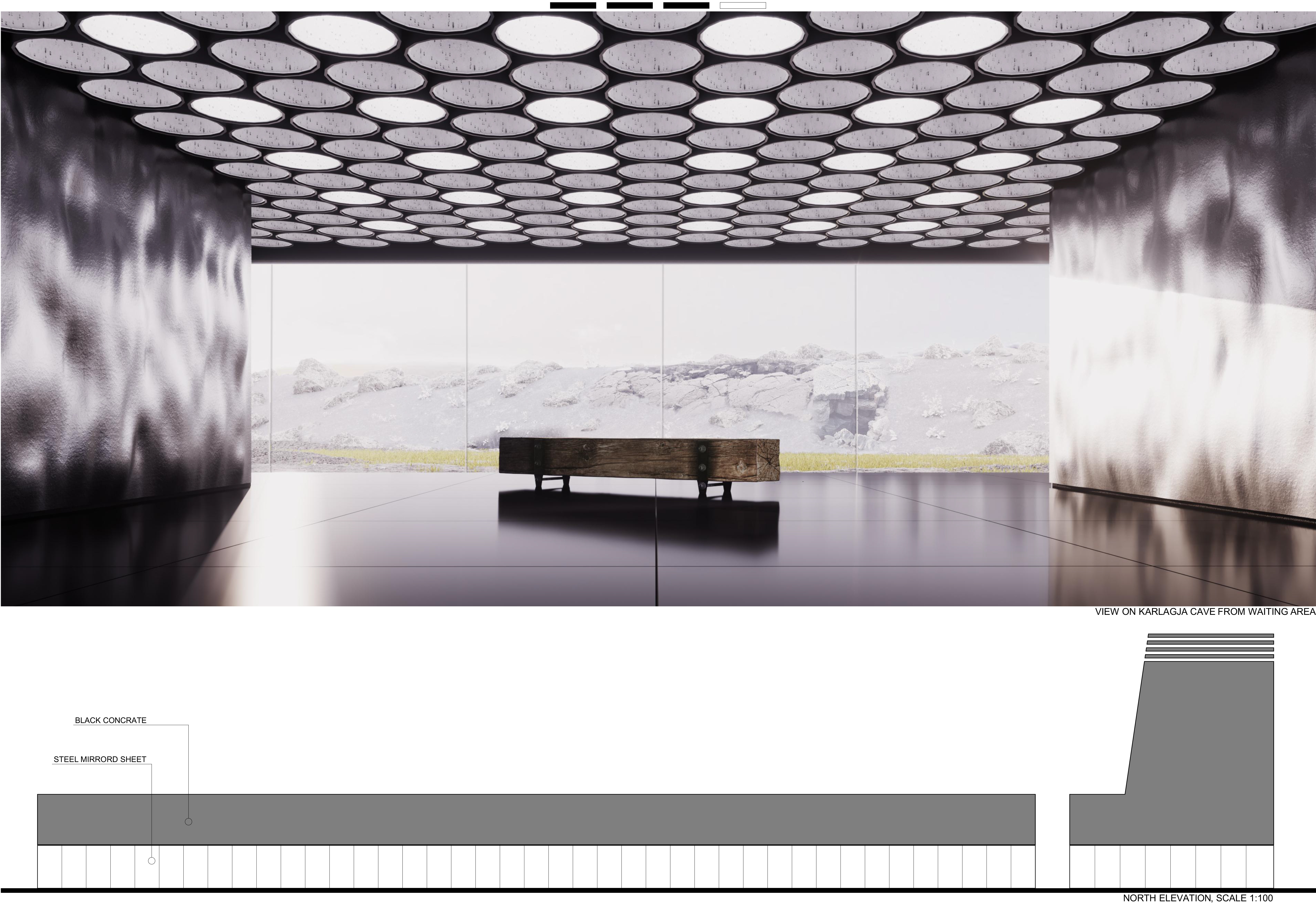5 key facts about this project
The design integrates naturally into its setting, influenced by the geographical significance of the North American and Eurasian Plates. Functions are interwoven to create a space where visitors can engage with both the architecture and the landscape. The design focuses on building connections between indoor and outdoor areas, enhancing the overall experience of the site.
Observation Points
Key features include observation points that are carefully positioned to provide expansive views of the surrounding landscape. These areas invite visitors to explore and enjoy the natural beauty. The main observation point stands out, serving as a focal feature, encouraging people to take in their surroundings and appreciate the environment.
Resting and Gathering Spaces
Alongside the observation locations, there are seating areas designed for relaxation and socializing. A coffee spot and a rest area provide inviting places where visitors can pause and connect with others. The waiting area is equipped with large windows that overlook the Karaglja Cave, linking visitors to the natural scene outside.
Sustainability Initiatives
Sustainability plays an important role in the design, with systems for collecting rainwater and producing renewable energy included in the technical spaces. The roof structure allows for the installation of solar panels, demonstrating a commitment to environmentally friendly practices. This approach addresses ecological concerns while supporting the long-term vision for the site.
Material Choices
The project incorporates black concrete and steel mirrored panels. These materials not only enhance the appearance of the structure but also ensure durability and longevity. The combination of textures adds visual interest, allowing the design to fit comfortably into its environment without dominating it.
The careful balance between architecture and landscape creates engaging spaces that invite visitors to pause, reflect, and experience the environment.






















































